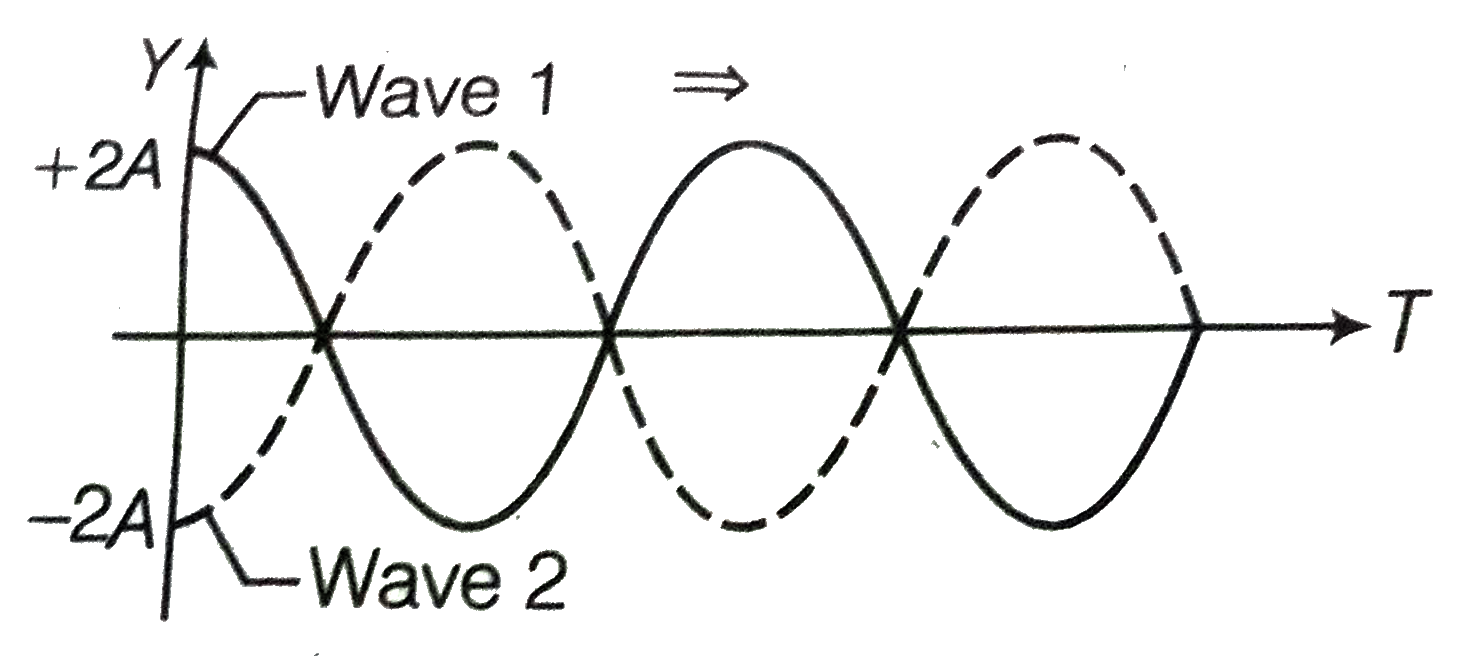The resultant wave obtained when the above two waves interfere with each other is best represented as




None of these
The correct Answer is:C
The individual waves given are out of phase i.e. ϕ=π. Hence, destructive interference occurs and the resultant wave equation is
y(x,t)=2Acosϕ2sin(kx−ωt+ϕ2)⇒1
For ϕ=π,y(x,t)=2Acosπ2sin(kx−ωt+π2)=0 for all x
Thus, the resultant wave will be coincident with the X-axis.
Topper's Solved these Questions
- WAVE MOTIONBOOK - MHTCET PREVIOUS YEAR PAPERS AND PRACTICE PAPERSCHAPTER - WAVE MOTIONEXERCISE - MHT CET CORNER
23 Videos
- WAVE MOTIONBOOK - MHTCET PREVIOUS YEAR PAPERS AND PRACTICE PAPERSCHAPTER - WAVE MOTIONEXERCISE - Exercise 1
48 Videos
- SURFACE TENSION BOOK - MHTCET PREVIOUS YEAR PAPERS AND PRACTICE PAPERSCHAPTER - SURFACE TENSION EXERCISE - MHT CET Corner
15 Videos
- WAVE THEORY OF LIGHT BOOK - MHTCET PREVIOUS YEAR PAPERS AND PRACTICE PAPERSCHAPTER - WAVE THEORY OF LIGHT EXERCISE - MHT CET CORNER
4 Videos
Similar Questions
When two waves interfere , does one alter the progress of the other ?
View SolutionTwo identical sinusoidal waves, moving in the same direction along a stretched string, interfere with each other. The amplitude y of each wave is 9.8 mm, and the phase difference p between them is 100∘.
(a) What is the amplitude y. of the resultant wave due to the interference, and what is the type of this interference?
(b) What phase difference, in radians and wavelengths, will give the resultant wave an amplitude of 4.9 mm?
View Solution
Knowledge Check
When two waves interfere , does one alter the progress of the other ?
AYes, their frequencies get interchanged.BYes, one wave is reflected back.CNo , each wave continues to move onwards in its respective direction.DAll of the aboveWhen waves interfere , is there any loss of energy ?
AYes, energy is lost in the form of heat.BNo, there is no loss of energy.CYes, energy is lost in the form of chemical energy.DNone of theseTwo waves of equal amplitude when superposed, give a resultant wave having an amplitude equal to that of either wave. The phase difference between the two waves is
Aπ3 radianBzeroCπ2 radianD2π3 radian
When waves interfere , is there any loss of energy ?
View SolutionTwo waves of equal amplitude when superposed, give a resultant wave having an amplitude equal to that of either wave. The phase difference between the two waves is
View SolutionTwo identical sinusoidal waves, moving in same direction along a stretched string, interfere, with each other. The amplitude of each wave is 10.0mm, and the phase difference between them is 80∘. What is the amplitude of the resultant wave and the nature of interference ?
View SolutionTwo waves of equal amplitude and frequency interfere each other. The ratio of intensity when the two waves arrive in phase to that when they arrive 90∘ out of phase is
View SolutionTwo coherent waves of intensities I and 4I interfere at a point. If the resultant intensity is 3I, then the phase difference between te two waves at the point is
View Solution
